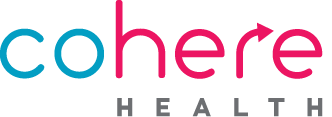Why health plans are bringing utilization management in-house
Many health plans have relied on delegated vendors to manage utilization management (UM) and prior authorization for years. These third parties promised efficiency but often delivered a different reality: lack of control, high costs, provider friction, and missed opportunities to improve member care.
Now, the tide is turning. Health plans are increasingly bringing UM in-house, combining clinical expertise with automation and clinical intelligence to modernize prior authorization. This shift is driven by the demand for better provider and member experiences and new CMS prior authorization requirements (CMS-0057-F) that raise the stakes for accountability and transparency.
The problem with delegated utilization management
Delegation once seemed like the simplest option: outsource UM and prior authorization to a vendor, and let them handle the complexity. But over time, this model has revealed significant drawbacks:
- Lack of control: Plans often lose visibility into how decisions are made, which criteria are applied, and how appeals are handled.
- High costs: Delegated solutions may come with steep administrative fees, plus inefficiencies that can add hidden expenses.
- Provider abrasion: Legacy vendor workflows rely on outdated provider portals or fax-based submissions, increasing friction and slowing care.
- Reputational and compliance risk: Vendors that emphasize denials rather than collaboration can damage provider relationships—and in some cases, fail to prepare for evolving regulatory requirements like CMS-0057-F.
Why insourcing prior authorization is gaining momentum
Bringing UM in-house means reimagining the work, not just shifting who does it. Plans see several advantages to bringing UM in-house, including:
- Greater transparency and accountability: Plans can apply their medical policies consistently and ensure decisions align with strategic priorities.
- Improved provider and member experience: Plans can strengthen relationships across the care ecosystem by eliminating delays and reducing unnecessary denials.
- Regulatory readiness: With CMS prior authorization compliance now front and center, plans are motivated to build compliant, auditable processes.
In short, insourcing prior authorization allows health plans to own their UM strategy, instead of being limited by the priorities and processes of a third-party vendor.
The role of automation in a successful in-house UM strategy
Insourcing UM doesn’t mean simply flipping a switch. It means assuming responsibility for clinical reviews, compliance documentation, appeals, and provider communication—tasks that can feel overwhelming for teams used to vendor support.
This is where automation becomes indispensable. A modern UM platform powered by AI and clinical intelligence transforms prior authorization into a seamless workflow that supports, rather than burdens, in-house teams.
Key advantages include:
- Fewer delays in care with faster decisions
- Consistent, evidence-based decision-making
- Reduced denials and appeals through upfront alignment
- Data integration with claims, EHRs, and provider portals for real-time visibility
By insourcing UM, health plans can perform like a mature, scaled operation even in the early stages of insourcing.
A phased approach to insourcing utilization management
While the benefits are clear, successful insourcing requires a thoughtful rollout. The most effective plans take a phased, specialty-by-specialty approach rather than trying to transform UM overnight. A natural place to begin is with high-volume, routine care such as imaging and physical therapy. These services account for many prior authorizations but are more straightforward to manage than highly complex areas like oncology or cardiology.
As the program expands, health plans can add targeted expertise where needed. Most already have strong UM teams with nurses, intake staff, and generalist physicians; often, only a handful of specialist physicians or reviewers are required to insource additional specialties. At the same time, plans must align with medical policies. If a delegated vendor previously managed a specialty, it likely applied its proprietary criteria. Insourcing means determining whether to adopt internal policies, license from third-party sources, or work with a partner to codify policies directly into workflows.
Finally, compliance frameworks need to be established from the outset. While automation can streamline compliance tracking and documentation, plans must first implement processes that align with CMS-0057-F and relevant state requirements. This phased rollout minimizes disruption, builds confidence, and positions teams for long-term success.
Choosing the right partner for UM transformation
While insourcing UM is about reclaiming control, health plans don’t have to do it alone. Success depends on choosing the right partner that supports a phased strategy, offers configurable workflows to adapt to regulatory changes, provides white-glove implementation support, and combines advanced AI with deep clinical expertise for outpatient and inpatient workflows.
The old delegation model gives way to a more innovative, sustainable approach. By bringing utilization management in-house and leveraging automation, health plans can lower costs, improve provider and member experiences, and strengthen compliance. The future of UM is in-house, AI-powered, and patient-centered. Plans that embrace this shift today will best lead tomorrow’s healthcare landscape.
Ready to take the next step?
Download our insourcing playbook, Reclaiming Control: A step-by-step playbook for insourcing UM with automation to explore a phased, proven approach to modernizing UM.

